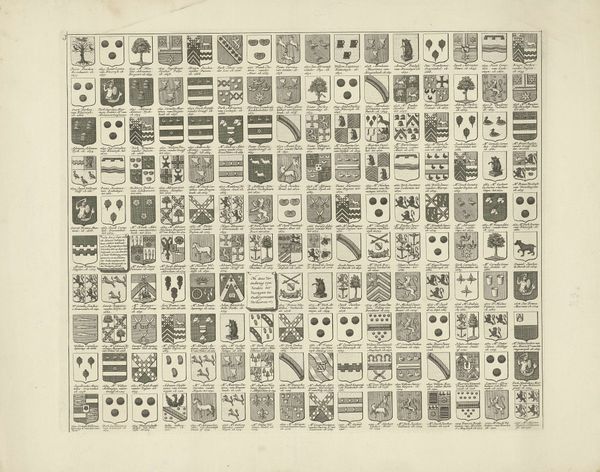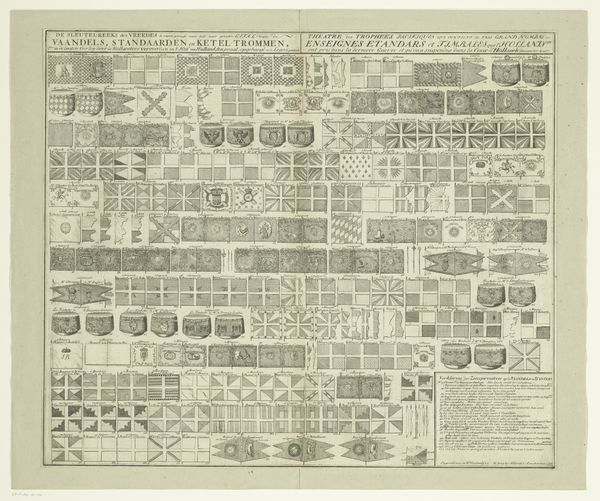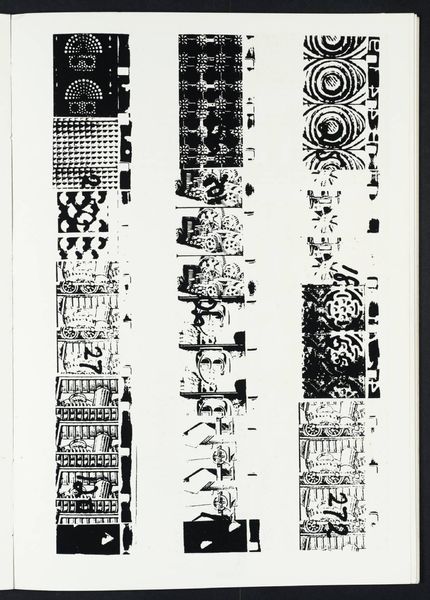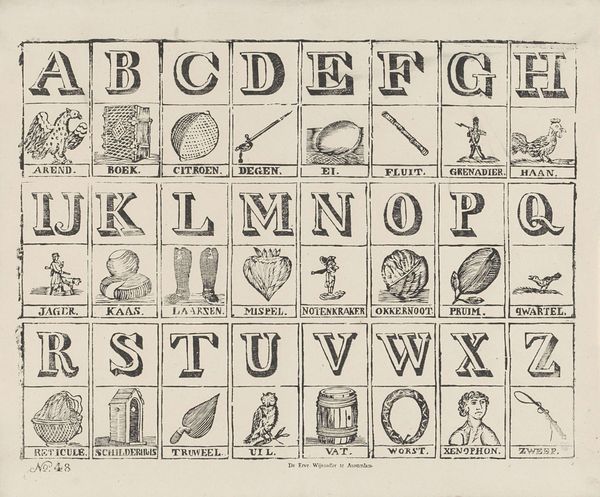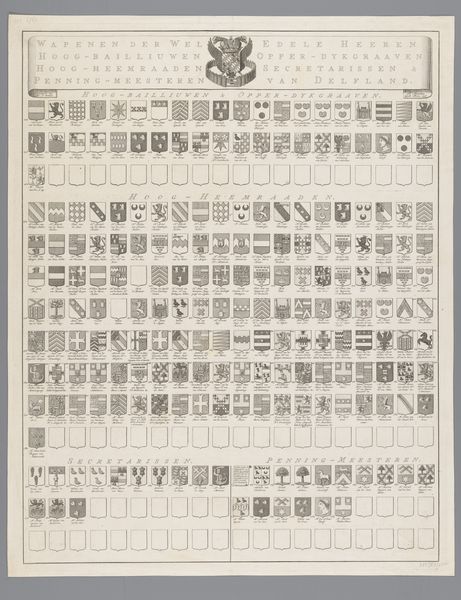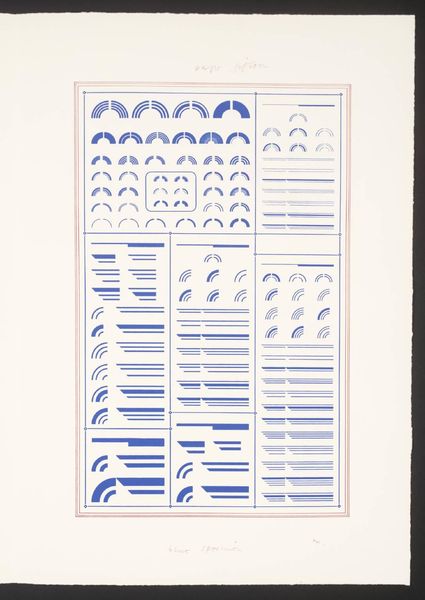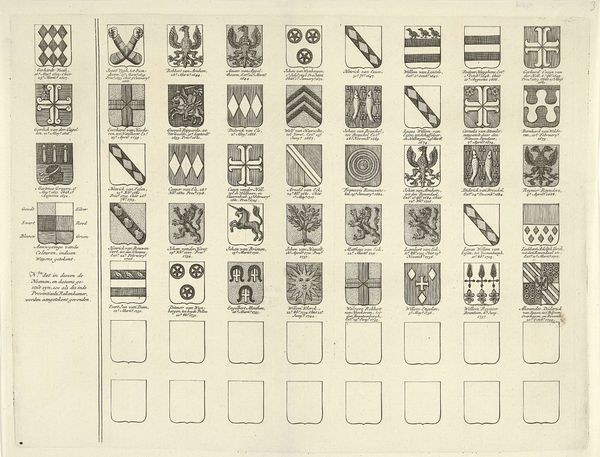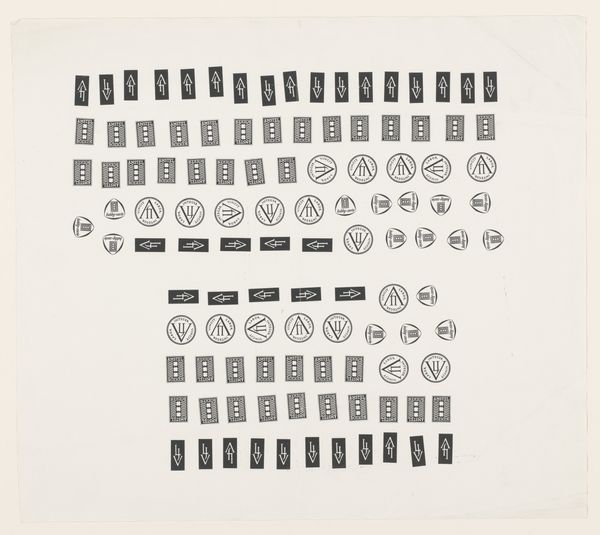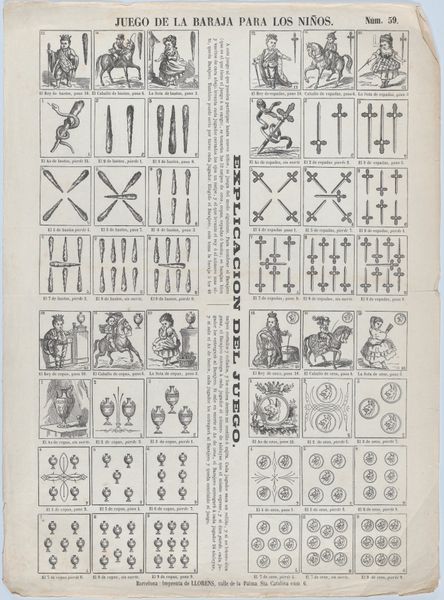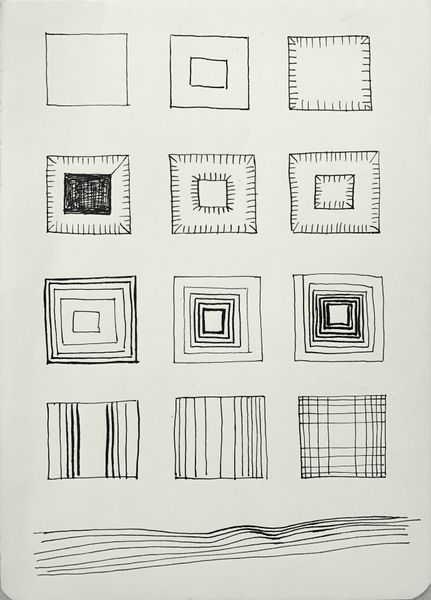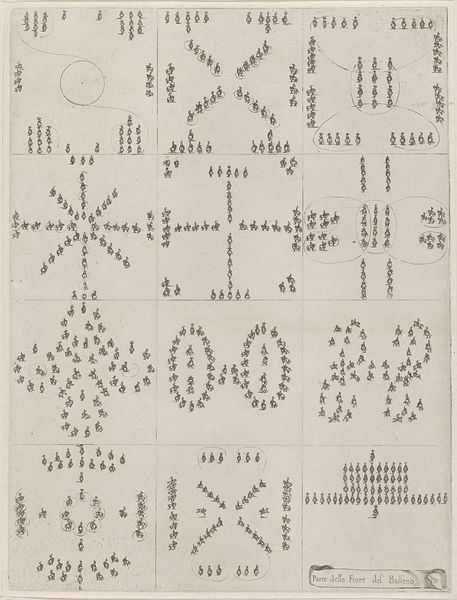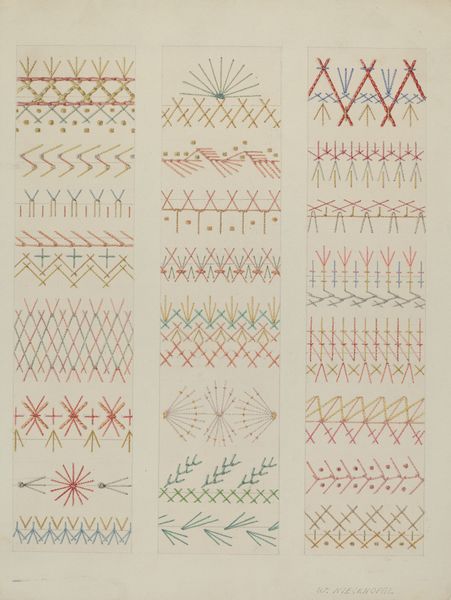
Wapenkaart met de wapens en namen van de heren veertigen van de stad Leiden 1758
0:00
0:00
graphic-art, print, engraving
#
graphic-art
#
baroque
# print
#
old engraving style
#
pattern repetition
#
genre-painting
#
engraving
Dimensions: height 378 mm, width 447 mm
Copyright: Rijks Museum: Open Domain
Curator: Looking at this print, "Wapenkaart met de wapens en namen van de heren veertigen van de stad Leiden," made in 1758 by Abraham Delfos, what springs to mind? For me, it's like gazing into an archive of dreams. Editor: An archive indeed! But what immediately hits me is the overwhelming feeling of hierarchy. All those shields… it's a rigid, ordered display of power and privilege in Leiden at the time. Curator: That's exactly it. I see little windows into individual aspirations—each family putting their best face, or lion, forward. I imagine each one has a story. A bit like looking at tarot cards. Editor: Oh, I love that! Tarot aligns well with my thinking, and also emphasizes something often overlooked: This wasn't a neutral record. Delfos made choices about how to present these families, subtly reinforcing existing social structures through this baroque style. Look at the almost militant organization of the patterns and coats, which emphasizes homogeneity more than individual distinction! Curator: Perhaps! But the subtle quirks! Did you notice that little duck waddling confidently? Or the stars, almost playfully scattered? Surely, there’s a sense of pride woven in too, don’t you think? Perhaps of playful, joyful rivalry? Editor: Oh, undoubtedly there's pride! Pride deeply intertwined with the political landscape of Leiden, however. We cannot dismiss it; it is literally in Delfos' visual structure! I do recognize that some crests allude to trade, geography, and other elements! It can all be there, right? I will never argue against art's ambiguity and multilayeredness! Curator: I do agree! It's both a formalized representation and something more, an insight into individual egos and city’s collective persona! But maybe a tiny bit funny. After all, what else can we make of these emblems but also try to decipher what stories might lie hidden within? Editor: The point of contention comes, I suppose, to the role that art plays in portraying its sitters. However, regardless of one's personal viewpoint of such portraits, the piece remains relevant in an artistic canon! It also serves a vital service when investigating topics like Baroque visual culture and the formation of societal dynamics! Curator: Exactly. Whether Delfos sought to merely chronicle, the map continues to whisper volumes concerning ambition, societal class, history, identity— perhaps too personal to make an assessment but not enough for some healthy inquiry into ourselves!
Comments
No comments
Be the first to comment and join the conversation on the ultimate creative platform.
